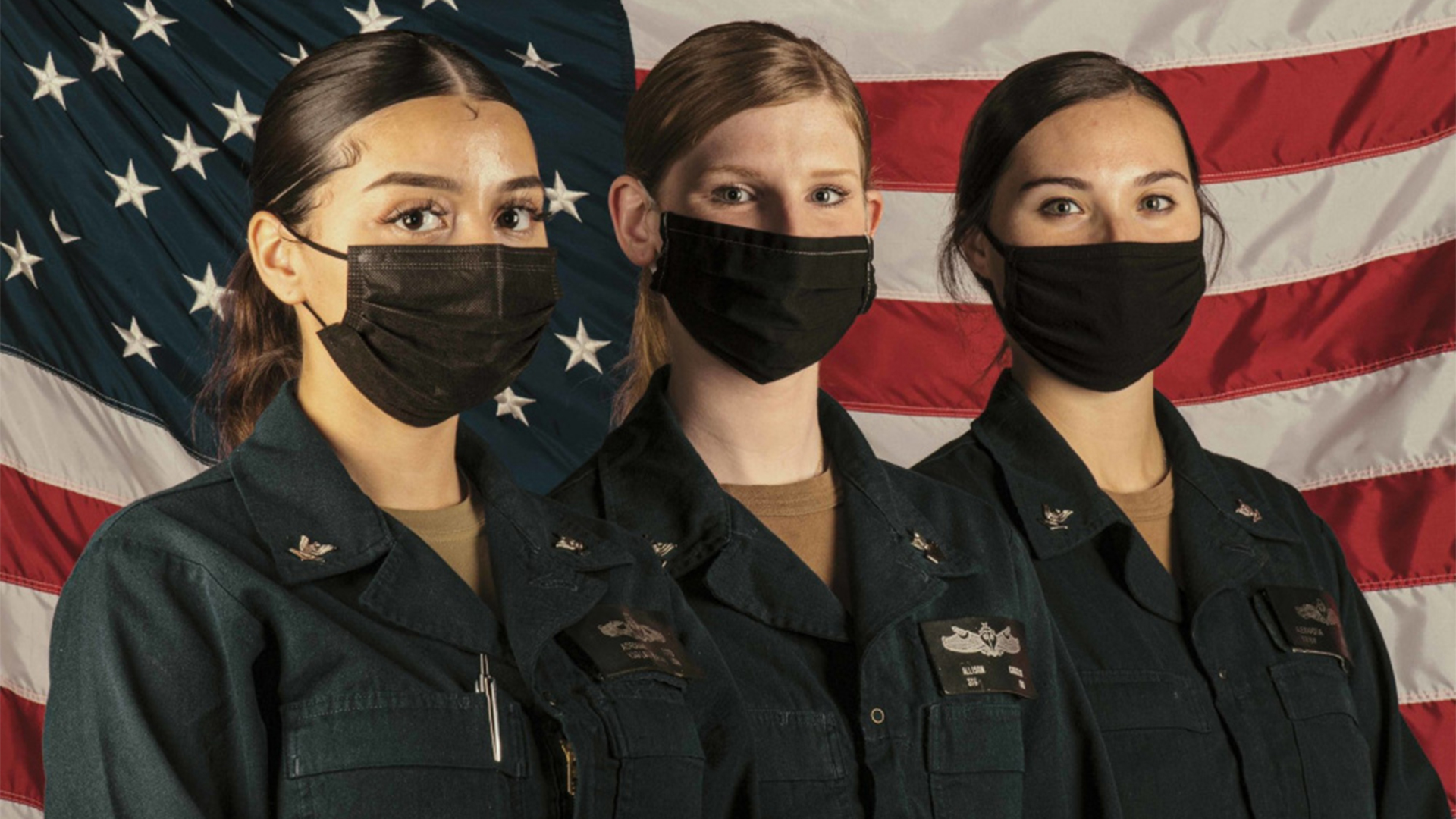

Sonar Technician (Surface) 1st Class Allison Coughlin still remembers the first time she manned the helm of the $4.5 billion aircraft carrier USS Theodore Roosevelt. It was 2017, and she was just 18 years old when it was time for her to take the wheel of the 117,000-ton aircraft carrier while it was conducting a replenishment-at-sea, a dangerous maneuver where two ships slide up next to each other for resupply.
“I was nervous when my instructor finally left me with the helm because it felt like he was always there before,” Coughlin recently said. “I thought, ‘this is crazy,’ but then that pride kicks in, and the training becomes second nature. After that, I was just so proud and really excited that the whole chain of command had so much trust in me. It’s like they were telling me, ‘you got this now, and it’s your turn to steer the ship while we’re 180 feet away from another ship.’”
Despite the immense responsibility of steering a massive warship, the post of master helmsman is one that any sailor, whether they are on their first tour or have decades of salt, can take on, if they prove themselves worthy.
“They don’t look at rank or whether you’re a woman or a man; they don’t look at age,” Coughlin said. “I mean, I got qualified at 18, and a couple of the other master helmsmen are currently 18 and 19. When they see that you are capable, no matter who you are, and they trust you, that’s an awesome feeling.”

Becoming a master helmsman is no joke: it takes hundreds of hours of hands-on training both in the classroom and behind the wheel to become fully qualified. Once qualified, a master helmsman can steer the ship through challenging situations, such as pulling in and out of port, transiting a strait, sailing through rough waters, or executing a sea-and-anchor detail, an all-hands effort for getting a ship away from a pier and out to sea.
While deck seamen and quartermasters man the wheel as helmsmen, master helmsmen like Coughlin take over when the steering gets tricky. In other words, they’re like your mom when you need to parallel park the family minivan. The master helmsman also has a deep understanding of the different components that go into driving the ship.
“Any time the navigation team thinks it’s going to be a difficult sea state, we’ll come up,” said Coughlin. “When the ship is most likely to crash, that’s when we’re driving to keep the boat safe.”
Coughlin is one of only four sailors among the 5,000 aboard the Theodore Roosevelt who, as master helmsmen, are trusted to steer the ship through such conditions. The rarity of the qualification makes it a point of pride.
“To me, it was one of those challenging qualifications that I wanted to get,” said Yeoman Third Class Alexandra Miller, another master helmsman aboard the TR. “It’s cool to know that you are doing something really important. When I’m driving, when I’m keeping the ship on course, it makes it easier to launch and catch aircraft. What we do compliments the ship’s essential operations.”
Featured image – U.S. Navy Yeoman 3rd Class Adriana Soto, from Painesville, Ohio, left, Yeoman 3rd Class Alexandra Miller, from Annapolis, Md., center, and Sonar Technician (Surface) First Class Allison Coughlin, from Ronkonkoma, N.Y., three of the four qualified master helmsmen aboard the aircraft carrier USS Theodore Roosevelt (CVN 71), pose for a photo March 4, 2021. (Navy photo / Mass Communication Specialist Seaman Alexander Williams)
Related: That time Hitler’s nephew joined the US Navy to fight his evil uncle is the ultimate family drama